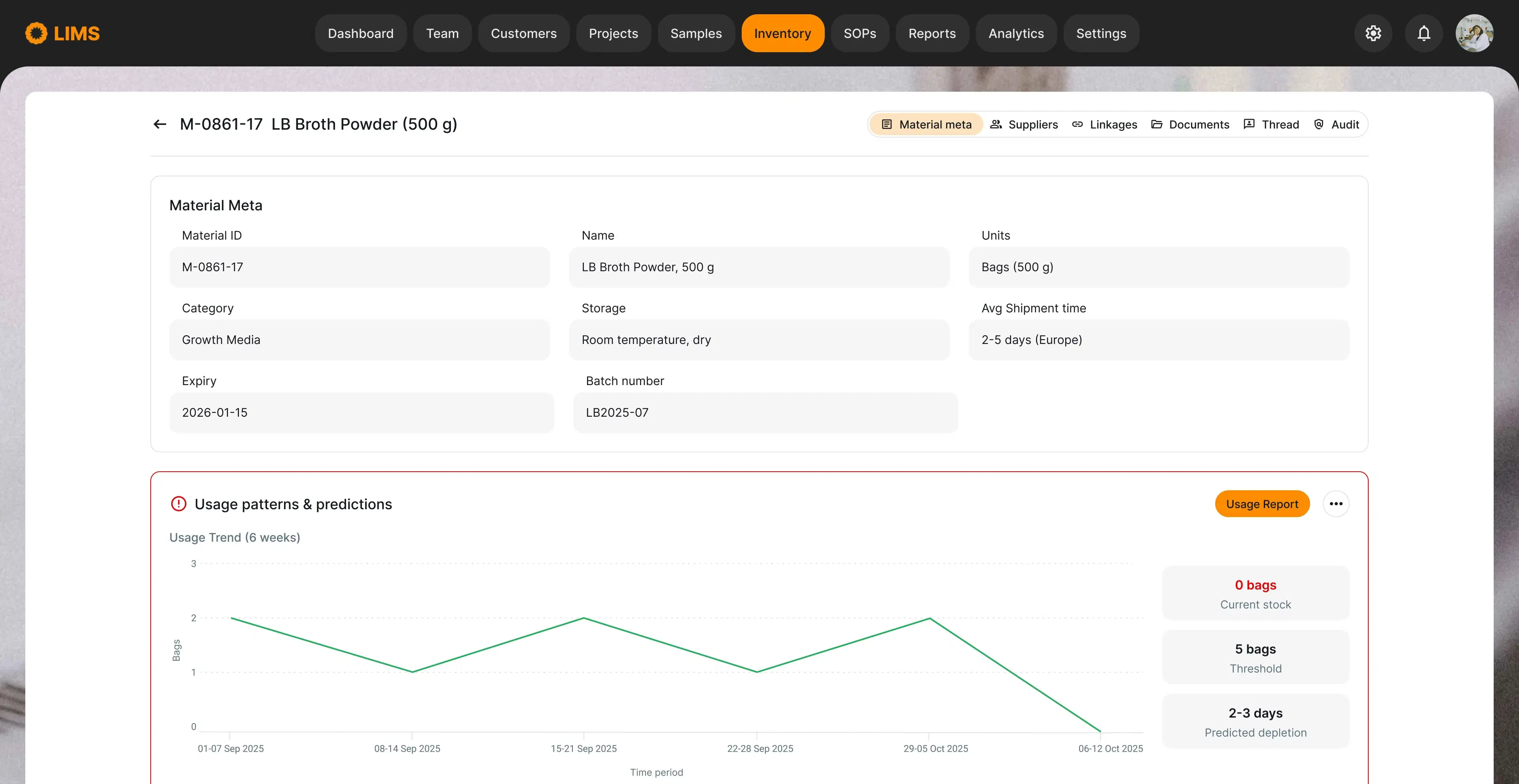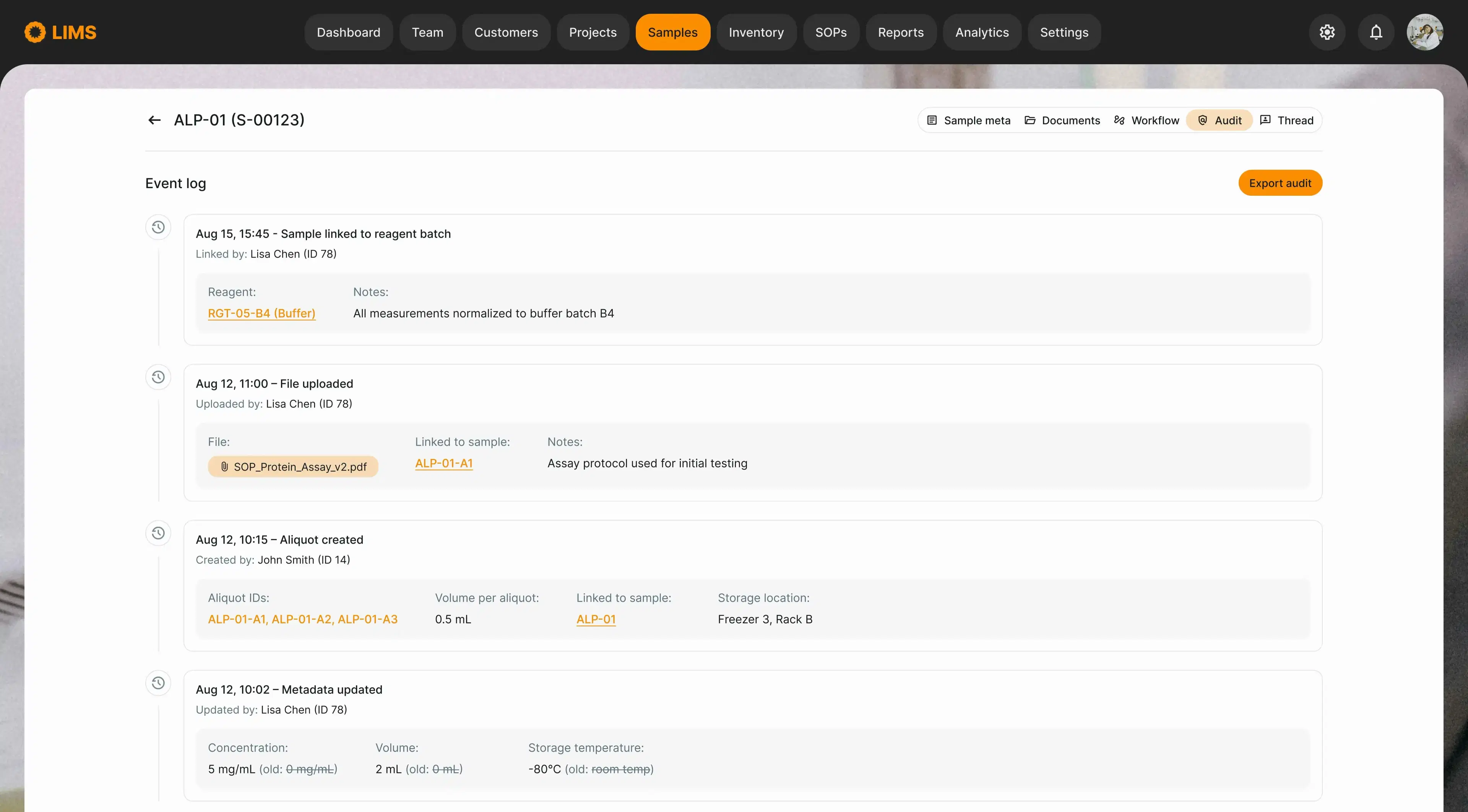The biotech sector is often perceived as a single ecosystem, but the reality is more complex, especially when it comes to software. The needs of an early-stage biotech startup differ significantly from those of mature enterprise, not only in terms of scale, but also in terms of mindset, resource allocation, and risk tolerance. Understanding these differences is a key to developing software that truly supports the goals of each.
Operational Pressure Points: Where the Paths Diverge
Startups operate under intense pressure to grow quickly with limited resources. Founders often juggle lab work, fundraising, and data analysis simultaneously. In this environment, digital infrastructure typically consists of Excel spreadsheets, shared drives, and ad hoc scripts.
Software is a survival mechanism, and its design must reflect the urgency and volatility of the environment.
Enterprises, on the other hand, are often slowed down by outdated software systems and multi-level decision-making. Their needs tend to focus on scalability, compliance, and integration with large, established workflows. Although they have greater access to specialized IT teams, implementing any new tool often involves navigating procurement channels, security audits, and lengthy deployment cycles.
Build vs Buy: A Question of Control and Flexibility
For many biotech companies, software isn’t just a tool - it’s a critical part of how science is done. That’s why many R&D teams, especially those with technical leadership, choose to build tools tailored to their evolving workflows and data models. This approach offers adaptability and long-term scalability - something off-the-shelf solutions rarely provide without compromises.
While building custom software does require upfront investments, it pays off by enabling faster iteration and aligning the system with how science is actually practiced - not how generic platforms assume it should be done.
In contrast, some larger corporate organizations may prefer off-the-shelf solutions that promise regulatory readiness and vendor support. For them, long-term stability and integration outweigh initial flexibility. However, these advantages can come with rigid architecture and expensive licensing models that aren’t easily adaptable to new experiments or workflows.
The Role of LIMS and the Growing API Imperative
Laboratory Information Management Systems (LIMS) clearly illustrate this gap. Startups often delay implementing LIMS, fearing complexity, cost and rigidity of structured data management becomes a problem. That’s when the need for customizable, API-friendly LIMS arises.
For large biotech companies, LIMS is already an integral part, but the problem lies in modernization. Older systems may lack integration capabilities, leading to data delays or silos. Modernization becomes not only a technical solution, but also an organizational one, involving change management and large-scale retraining. For these companies, the ability to integrate with artificial intelligence tools, analytical platforms or cloud infrastructure becomes an integral part.
By the Numbers – Real-World Data
Biotechnology labs that use spreadsheets and fragmented systems spend a significant amount of time manually processing data. According to Scispot, scientists and lab managers spend 50 to 80% of their time collecting, cleaning, and organizing data, which is time that could otherwise be used for analysis of experiments. Moving to integrated platforms can reduce the workload of data processing by approximately 70%, significantly speeding up workflows and improving decision-making times.
Meanwhile, among large organizations, outdated LIMS and fragmented architectures create major barriers to innovation. Nearly 48$ of biopharmaceutical companies report incomplete data harmonization as a major barrier to the adoption of machine learning tools. In many case studies, which not only slows down innovation but also increases real coasts to hundreds of thousands of dollars.
Patterns and Pains We See Across the Field
In early-stage biotech companies, it’s common to hear things like:
"We store protocols and data in Google Drive, Dropbox, and someone’s laptop"
"We lost a sample and can’t trace what happened"
"We're growing fast and breaking everything as we go"
These companies are often science-heavy and tech-light. Informatics is an afterthought, until it becomes a fire. They’re open to modern, modular systems, but need fast ROI and minimal onboarding. Audit trails, versioning and access control become critical as they approach clinical stages.
By contrast, in pharma R&D and late-stage biotech, the concerns shift:
"We’ve outgrown our system, but migrating is a nightmare"
"Our LIMS doesn’t talk to the ELN or instruments"
"We failed a mock FDA audit due to missing logs"
Here, the challenge is often system fragmentation and validation complexity. Compliance is non-negotiable. The opportunity lies in stitching together what already exists: APIs, interoperability and orchestration layers matter more than building from scratch.
Biotech Teams Build What Actually Works
Treating biotech startups and enterprises as having identical software needs is a mistake that often results in bloated systems for the former and inflexible ones for the latter. At CodePhusion, we have seen how right -sized, customized solutions based on a company’s actual stage and strategy lead to faster results, smoother workflows, and greater long-term value.
Whether you’re building your first LIMS or modernizing a sprawling infrastructure, it all starts with asking the right questions and creating software that evolves with science.














